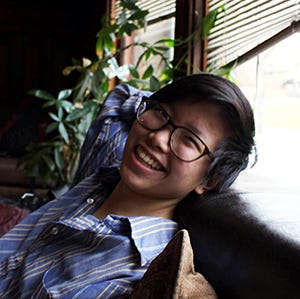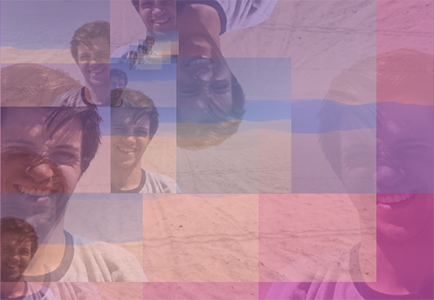
In this post (thanks for the invite Noa/h!), we (Janice [farming in Rhode Island] and Ryan [librarying in Arizona]) share a web-based, long-distance, collaborative translation experiment using a poem by the Salvadoran poet Elena Salamanca.
Translation takes place across distance. It can involve spans of time (when working with dead writers), stretches of geography (when working with writers in other parts of the world), and cultural expanses (when working with writers with different backgrounds from your own). Often it can involve all three (and more!). As Mónica de la Torre’s new book, Repetition Nineteen, makes clear, even when using translation to approach your own poems, there is ample territory to traverse, stretch, navigate, and slip along/across/through/between/etc. In this post, we wanted to explore additional levels of separation by conducting a long-distance, collaborative translation experiment using as our source text the poem “Sobre el mito de Santa Tecla” by the Salvadoran writer, performance artist, and historian(!) Elena Salamanca, who is currently based in Mexico.
The work of writing is often imagined or practiced as a solitary pursuit. Translation, though, is fundamentally collaborative because it involves working with another person’s text. It typically includes conversations with friends/editors/voices in your head/lovers/language-nerd forums/etc. to troubleshoot snaggles, brainstorm possibilities, and polish off rough edges (if that’s your goal).
That said, neither of us had spent time working on translation in a collaborative way that involves two or more translators in the process from start to (supposed) finish. Unlike Jen and JP from Antena Aire, who have a long history of collaborative translation experimentation (some of which was recently featured in the Tripwire Pamphlet Series), and unlike the editors of the online translation journal Asymptote (whose team is spread across the gosh-dang globe), this type of long-distance, technologically-mediated translation fun is still new to us. Given the isolation and discombobulation that comes with our current moment of global crisis, we both have been seeking out connection through joint creation. We thought this particular experiment would provide an opportunity for a few specific explorations. While the questions below have guided our approach, we don’t pretend to have reached any definitive answers.
- What does it look and feel like to build our own approach to collaborative translation by letting the methodology emerge through the act of collaborative translation itself? In other words, how do we just “start” and then let those impulses influence what the process becomes?
- How do we document our process in addition to our final(?) product? How do we lift the veil to show our first guesses, our course corrections, our “rough edges”? How can this help to abolish the myth of the expert? Or rather, can this help to make translation feel more accessible — a thing that normal, non-professorial, mistake-making people do? Can it make translation feel more fun?
- How do we work with the possibilities and limitations of our different backgrounds and contexts? How do those differences inform our goals, and how do we articulate these differences/goals to ourselves and each other? What does a successful translation look like to the author and translators, respectively? What do we do with inconsistencies? Is resolution the answer???
- What opportunities does the internet provide for creative presentation of collaborative translation work? Because we live thousands of miles apart, we had to use the internet to complete this experiment. How, though, can we not only use it, but play with it, incorporating sounds and images and texts and GIFs and more? How can we open the floodgates and invite you to swim?
Anyway, whatever this is, it was a fun process. And whatever this is, it’s in process still. Thanks to Elena’s openness to our experiment, we’ve been able to use her poem as the first lever in a translation-minded Rube Goldberg machine that we are excited (and honored) to share here on Anomaly’s blog. We’d be delighted if you joined us!
To enter the flux, CLICK HERE!

Janice Gan
Living and rooting in Rhode Island, the best I can. Growing vegetables at Big Train Farm, meeting kids in their worlds, writing poetry for informal sharing, simmering in words. Marveling at in-between spaces — soil is 25% air. I like to sink through and pass notes around. Letting the complications be complicated, hoping the tangles can be their own kind of sturdy.

Ryan Greene
Born in Phoenix. Living in Phoenix. Translating^0, translating^1, and sometimes even translating^2 and translating^3 in Phoenix. 2nd home = Palabras Bilingual Bookstore in Phoenix. Currently sweating.
translatingⁿ salamanca was originally published in Anomaly on Medium, where people are continuing the conversation by highlighting and responding to this story.
